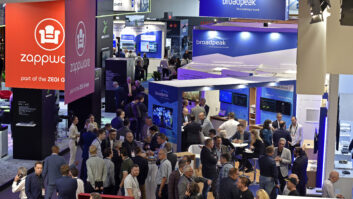The author is president of research and consulting firm Jacobs Media Strategies.
It’s hard to believe, but our 13th annual Techsurvey went to the field in January. When all is said and done, we’re expecting that more than 200 stakeholder stations from all over the U.S. and Canada will work together to produce our ongoing narrative about how consumers are using media and technology.

The Media Usage Pyramid is a signature part of the survey. This was 2005.
Our Techsurveys are the biggest research studies in the radio industry, typically producing at least 30,000 respondents each year. While the samples aren’t representative of the entire population — most are radio listeners from station email databases — their massive size more than makes up for it.
From the very first Techsurvey in 2005 that uncovered the “cell phone only” problem leading to Arbitron addressing its sample deficit, to last year’s study that illustrated the impact of video on-demand and its relationship to podcasting, these national studies have provided broadcasters with an ongoing tracking mechanism to better understand the technology changes that are all around us.

Here’s the Media Usage Pyramid of 2015.
For the first seven years of Techsurveys, respondents were from the “rock family” — listeners of classic rock, mainstream rock, alternative and Triple A. In 2012, we opened up Techsurvey to all formats, allowing us to zoom in on fans of stations as diverse as adult contemporary, sports, country, news talk and variety hits.
In 2013, we began to explore generations, breaking out our massive data sets by boomers, Xers, Millennials, Gen Z and the silent generation (born in 1946 or earlier). Marketers often speak in generational terms, and so our Techsurveys are now able to provide great granularity in the understanding of tech trends and shifts.
While these studies tend to be tech-focused, delving into areas that include streaming, podcasting, social media, mobile and “connected cars,” we also explore why consumers continue to enjoy radio amidst all these digital options. And it turns out that while new media are very appealing to many respondents, radio continues to provide its own unique assets. Beyond music and personality, many listen to the radio for companionship, escape and mood elevation. Others are simply in the habit of listening to the radio. As we’ve learned, it’s not a bad thing to be an integral part of people’s daily routines.

The pie chart shows platforms used to listen to stations by the respondents. The change since the previous survey (TS11) is shown in the boxes at lower right.
In the upcoming Techsurvey, we’ll be exploring new areas on the tech frontier. These include voice command technology (Amazon Echo, Google Home, etc.), shared mobility (Uber and Lyft), Facebook Live, cord-cutting, along with a deeper dive into the appeal and impact of podcasting. We’ll continue to dig into the automotive front as well, focusing on the Apple CarPlay and Android Auto dashboard ecosystems.
We had no idea back in 2005 when we started our Techsurveys that technology would be this advanced. No one did. Back then, social media, smartphones and tablets, “connected cars” and apps were essentially non-existent. Today, they play major roles in all aspects of many people’s lives. And they’ve had an indelible impact on the radio broadcasting industry, presenting a world of challenges and opportunities.
The story continues.
For more information about Jacobs Media’s Techsurveys, go to www.jacobsmedia.com/techsurvey.












